
AmpliTube Acoustic FREE
Music and Entertainment
App
THE NO#1 TONE STUDIO HAS GONE ACOUSTIC! CONNECT YOUR GUITAR, UKULELE OR OTHER INSTRUMENT TO YOUR...

Vehicle Log Book GPS PRO
Business and Finance
App
Vehicle Log Book PRO is your ultimate vehicle travel TAX companion for business or private use -...
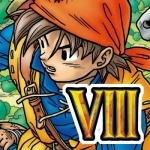
DRAGON QUEST VIII
Games
App
[Recommended Hardware] iPhone 5 or Higher/iPad (3rd Generation or Better) Please Note: iPhone 4 is...

Montessori Preschool
Education and Games
App
Looking for an engaging digital preschool app based on a proven teaching method? Montessori...
Daniel Boyd (1066 KP) rated The Haunting of Hill House in TV
Nov 13, 2018 (Updated Nov 13, 2018)
However, after watching the first couple of episodes, I was struggling to get into it. Due to the massive amount of hype and praise that this show was getting I decided to stick with it. By the time I got to episode 6, I was done, but then my girlfriend guilted me into watching that rest of the series because she wanted to see it and she was, "too scared to watch it alone."
What a huge waste of time that turned out to be.
If you have read any of my other reviews of horror-based media, you will know that I have a love/hate relationship with the genre. There are very few horror movies or shows that I feel indifferent about. I hate lazy, formulaic bad horror and that is exactly what Hill House is.
Every single episode consists of a jumpscare at the start of the episode, then a hard cut either forwards or backwards in the timeline. Then about 15-20 minutes of piss poor acting and boring dialogue. This is followed by another cheap jumpscare, usually a woman screaming at an obnoxiously loud volume at the camera. Then we get another hard cut back to the other timeline.
The main issue with this structure, (other than being extremely lazy and repetitive,) is that when the hard cut is made to the other timeline, the audience knows that it is done by an editor and that we are now being asked to focus on a part of the story within the other timeline, but for the characters within the show, it makes no sense. For example, two people are having a conversation when something creepy happens. They go to investigate and a screaming woman comes launching towards them or is standing at the edge of a bed or doing basically any other ghost story cliché you can think of. Then the show cuts away to show the characters as children being haunted by a different ghost, but then when we cut back to the present, we never find out how the last jumpscare was resolved. What was the aftermath of that screaming lady at the end of the bed you ask? How was that resolved? How are the character's mentalities after this happened to them? Who cares?! Say the writers, let's just move on to the next cheap jumpscare.
The script is extraordinarily lazy and the child actors are horribly bad. This is an issue that I feel that there isn't really any excuse for anymore after the brilliant child performances in shows like Stranger Things and Season 2 of the Sinner.
If you judge the quality of something based on what it sets out to do versus what it actually does, then The Haunting Of Hill House is the worst show that I have had the displeasure of sitting through this year. The scares are pathetic, the acting is atrocious in places, the script is diabolically cheesy at times, there is hardly any originality present for an, 'original series,' and the show is overflowing with clichés. Not once did a jumpscare actually scare me, because they were all either laughably predicable or they would be totally out of place just for the sake of shock value and would merit a heavy sigh rather than an legit scare. The most egregious, offensively bad example of this was when two characters were having a conversation in a car in episode 6 and a ghost randomly screams from the backseat.
Please do not waste your time with this series, 2018 had so much brilliance to offer on the small screen and despite what you might hear from big publications, this is not one of them.

Prom Dress Designer 3D: Fashion Studio for Girls
Lifestyle and Games
App
*** Design your own magical prom dress in this fascinating prom salon fashion game! *** * Girls,...

Top Girl Parking Story: Fashion Driving School
Games and Sports
App
Girls, are you ready for fun? Cuteness overload! This game is dedicated for you! Girl Driving &...
Gareth von Kallenbach (980 KP) rated The Greatest Showman (2017) in Movies
Jul 11, 2019
At a surprisingly short hour and forty-five minutes, this high-concept imagining of the meteoric rise of P.T. Barnum (Hugh Jackman), from the impoverished son of a tailor to one of the biggest names in the history of entertainment, should absolutely fly by. Tragically, it doesn’t. Beginning with an irresponsibly rushed first act that condenses decades of backstory into a few minutes, it dramatically stops dead between its second and third acts as we’re subjected to three songs in a row that not all that subtly beat us over the head with the inevitably that our leads are going to have to face some predictable, life-changing conflict before the big finale. Showman also suffers from the delusion that period pieces will be more engaging and relatable with a modern-inspired soundtrack, à la Baz Luhrmann’s misguided attempt at The Great Gatsby. The idea being that the music of the time, though antiquated to us now, would have sounded modern to people then, so why not put modern music, whether original or sourced, over period images in an attempt to bridge the gap between their world and ours? It’s a concept that might sound great on paper, but as Luhrmann already proved, the final results don’t so much complement each other as they expose each other’s weaknesses.
Its major flaw though, and why The Greatest Showman fails to be a great anything, is the insistence on force-feeding moments of attempted catharsis every 15-20 minutes, having earned almost none of them. A great many of the numbers are presented as such grand, climactic set pieces that they don’t feel as though they are working to serve a cohesive, larger whole. We are inundated with a blur of crescendo after crescendo and left little time to reflect on what we have just seen and heard before the film clumsily bounds off to the next song-and-dance laden plot point; and if you asked me to name any of the individual tunes now three days later, I’d be hard-pressed to do so. It’s an odd juxtaposition, and one I’ve very rarely experienced, wanting so badly for a film to end and at the same time wishing it had been given more time to fully realize its scope. Keep your ears open as well for an ill-advised line in which Barnum proudly compares himself to Napoleon. Isn’t Barnum supposed to be the “hero” of this piece, someone we are supposed to identify with and for whom we want to find success? Somebody please provide Showman’s writers a history lesson that didn’t just come off a Wikipedia page (for Barnum and Napoleon’s sakes).
With any negative criticism, I do like to try and go out on something positive, and if I have to concede anything to this movie, it’s that it finds its footing, albeit temporarily, while addressing issues of equality. Showman shines in the few moments where the supporting players portraying Barnum’s “oddities”, Keala Settle as Lettie Lutz in particular, are given the opportunity to stand toe-to-toe with the leads and, in many of these scenes, they rise above even the likes of Hugh Jackman. Another member of the cast who merits a little bit of praise (and I reserve the right to retract this at any time of my choosing, more than likely with whatever juvenile comedy he’ll be seen in next) is Zac Efron. Exposure to the likes of Nicole Kidman and John Cusack in 2012’s sadly overlooked The Paperboy, may finally be yielding results as he is the only lead who leaves an impression. Though his journey as a high society playwright begrudgingly brought into Barnum’s world definitely leans heavily on the saccharine side, it does provide a break of plausibility in amongst the unbridled chaos of the rest of the picture. I wouldn’t doubt that there is a much better movie that could have been made from expanding into its own feature the subplot of his character bucking the expectations of his status to fall in love with a circus performer.
Purple Phoenix Games (2266 KP) rated Citadels in Tabletop Games
Aug 13, 2021
In Citadels players will be donning the mantle of potential Master Builders and will need to build the greatest buildings within the city and manipulate the powers of special people within its walls. The game ends when a player has built their seventh district building. The player with the most VP at this time will be crowned Master Builder and winner of Citadels!
To setup, decide which eight characters will be used in the game, gather their cards and tokens, and place their tokens in ascending order on the table. This is to remind all players which characters (and their rank) is in play. Assemble the district (building) cards per the rules and shuffle the deck. Deal each player four of these district cards along with two gold coins. The eldest player will begin the game as the current First Player (complete with crown mini) and will begin the first phase of the first round.
Citadels is played over several rounds, each with two phases played within. The first phase is the Selection Phase, where the current First Player takes the character cards, shuffles them, adds zero to two cards (dependent upon number of players) face-up on the table and one card face-down. They then choose from the cards remaining in hand which character’s powers they would like to enact for the turn. The cards are passed to the next player in line who will do the same, and so on around the table.
Once all players have chosen their character card, the Turn Phase can begin. The current First Player (the one with the crown) will announce the characters in rank order, with the lowest character going first. In a typical game using only original base characters, this is “1: Assassin.” Whomever chose the Assassin card will flip over their character card, perform its special power, and then continue with their turn. In this case, the Assassin’s special power is to announce the name of a CHARACTER to assassinate. NOTE: This does NOT mean the name of the PLAYER. So the Assassin could choose to assassinate the King character, not the Travis player. After the character has used their power, the player can continue with the rest of their turn, though some character powers may be used at any time during the player’s turn.
After the character power is used, the player will gather resources in the form of two gold coins from the bank or by drawing two district cards from the deck and choosing one to keep in hand. After this choice, the player may then build one district in their play area if they wish and if they can afford to do so. Once complete, the crowned First Player will call out the next character rank (2: Thief in our example) who will continue their turn in the same way. The game continues in this fashion until a player has built their seventh district. The round continues until all players have had an equal amount of turns. Players then count VP on district cards and bonuses per the rulebook. The player with the most VP at the end of the game is crowned the Master Builder and winner of Citadels!
Components. I have to say that I enjoyed the components in the older version of Citadels I used to have just fine. I had sleeved all my cards, and the gold coins were nice back in the day. This version, however, includes many more components and each one is higher quality than the previous version’s. The art on the cards has been updated and is much much nicer now as well. The addition of the crown mini, the character tokens, and other components not mentioned here merely increases my love for Citadels. Windrider has knocked it out of the park with this version. And that’s saying nothing about all the additional characters now included in the game! Oh boy, so much variability!
Along with that variability is the customization of the game. You can play with one of the six pre-constructed provided suggestions in the rulebook or create your own combination of different characters. With three versions of each rank, many possibilities are… possible.
I do love Citadels, and with the right group can be a show-stopper all on its own. Some players may get a little offended or sassy because there is a fair amount of Take That in Citadels with the character interactions, so if playing with people who don’t understand the difference between a game and real life, I would prep them appropriately. I love being able to outwit my opponents by drafting certain characters they didn’t think I would want. Keeping them all on their toes during the game is sneaky fun.
So for me, with the amount of replayability, high quality and excellent components, and cutthroat gameplay I simply adore Citadels. I can pull it out with different groups and have different play experiences and try to tailor the character offering to the strengths of my players, or simply use one listed in the back of the rulebook. Purple Phoenix Games gives Citadels an underhanded, yet scholarly 21 / 24. It’s a stunning, magical, wonderful game and one of Bruno Faidutti’s best ever! Surely this is already in your collection, right? If not, make it so.
Purple Phoenix Games (2266 KP) rated Journey of the Emperor in Tabletop Games
Jun 13, 2019
We were very excited to receive this game from Laboratory H for preview before they began their Kickstarter campaign. We love games with an Asian influence, and it seemed to have touches and inspirations from Tokaido, another favorite of ours. What we received is its own beast with great art and components.
So like I alluded to in my intro, you play a party planner drafting the best path cards to build the most killer journeys for your Emperor. You are dealt a hand of path cards – big, beautiful cards – that can feature different combinations of Journey Start, Journey End, animals, and lanterns icons. To assist you in focusing your strategy, you are also dealt four Emperor’s Favorites cards, from which you will keep two and discard the others. From the large stack of remaining path cards you reveal six as an offer and the game can begin.
On your turn you will be drafting cards from the offer, playing cards from your hand, and trying to complete objectives for points on your Emperor’s Favorites and Journey Start and End cards. These cards have scoring conditions printed on them to help tailor your play. So a Journey End card could have a picture of a flower on it (as all Start and End cards do) with a scoring condition of 3 points for every tiger icon on this completed Journey (I want to call this a “scoring panel” for this review to make it easier). So then you want to concentrate on getting as many tiger icons into this Journey to score tons of points. Or perhaps a Journey Start card will have a different flower, and state that you get 21 points for every set of tiger, dragon, and turtle icons. Either way, you now have a goal to achieve and you spend the game trying to amass the most points from these scoring opportunities and those found on your Emperor’s Favorites cards, which have similar scoring iconography. Most points at game end wins!
While this seems easy and that there is no inherent strategy, let me introduce the wrinkle. You can only score points from completed journeys. Each completed journey has at least a Journey Start and Journey End card. These cards will be adjacent to each other to form a pathway through the cards. You may never add a path card to your journey between two existing cards, but they can be added to the edges of a journey – either at the beginning or the end. If you add to the beginning, you will completely cover up the Journey Start card’s scoring panel so that you can create an uninterrupted path. Herein lies the strategy. At what point do you take the plunge and cover up a scoring panel to add to your journey? Yes, you can get way more points by doing this, but in a 4-player game you only have EIGHT turns. So do you feel like you will be able to draft just the right cards to maximize your scoring or will you falter and not be able to complete a journey in time, thus forfeiting any points you could have scored? Oh, you clever game…
Components. This is a smaller card game. The Emperor’s Favorites cards are about the mini size you would find in OG Ticket to Ride. The path cards are much larger and similar to the tarot sized cards, if not even taller. Both are of great quality with the wonderful linen finish (that I’m learning is more polarizing than I originally thought, but I love it!). Our review copy came with a few scoring sheets to tally the final scores – which we didn’t use correctly but still arrived at the correct final scores. The art in this game is truly breathtaking. The details in the murals in just the backgrounds of the path cards are amazing, and the flowers and animals are really really incredible. If we had one small gripe about the art, it was mentioned that someone could not tell much of a difference between the tiger and the dragon icons on the path cards. I didn’t have much of a problem deciphering the difference, but they are very similar in color and style, so I can see how others may view this as an issue for them.
DISCLAIMER: These are preview copy components, and I do not know if the final components will be similar or different, or if the Kickstarter campaign will alter or add anything through stretch goals. That said, I am very satisfied with the components provided in this game.
This is a really good game. A lot more thinky than Tokaido (using a similar theme), and ultimately more enjoyable because you really feel you have control over your turns and aren’t just going for the best available at the time. You actually have to employ strategy here in order to be competitive. And although this is not a spiteful take-that game, you most certainly can foil your opponents’ plans indirectly by drafting their much-needed path cards. The art is amazing, the game is a great length, and you really want to keep playing. To me, that is the mark of a really good game. All that said, I would recommend this one if you are looking for a quick game that gives you all the good feelings of Tokaido but also scratches more of a gamer’s itch for actual strategy. Oh, and it’s absolutely beautiful.
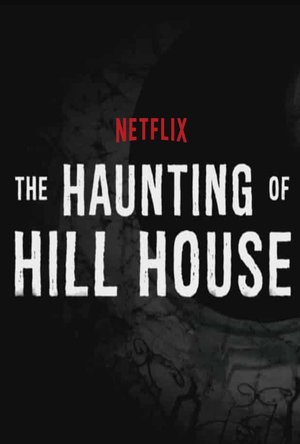
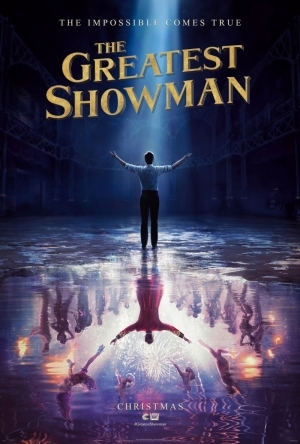
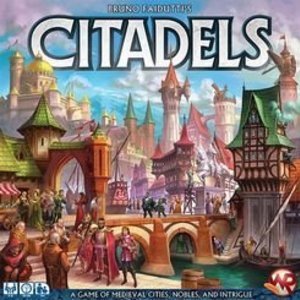
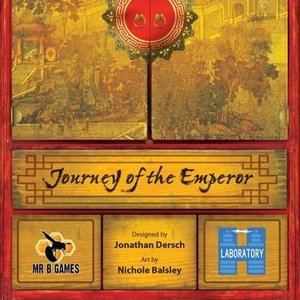
Lee (2222 KP) Nov 13, 2018